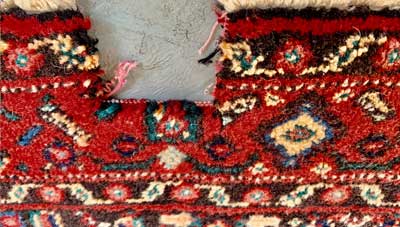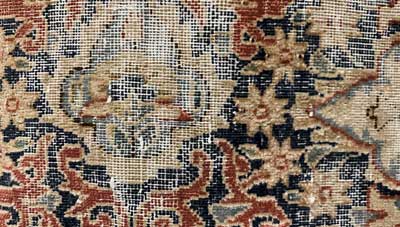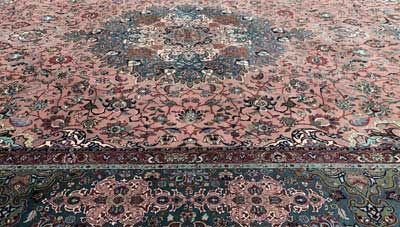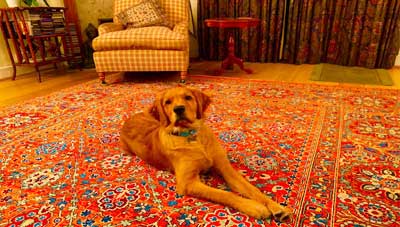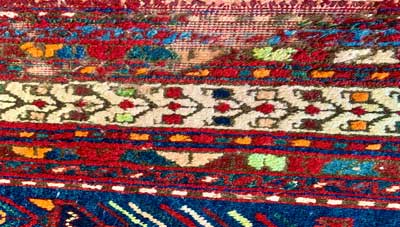Fringes are often the first part of an Oriental rug to show signs of wear. Catching this in the early stages is vital to maintaining the health of your rug, and will usually avoid the need for major mending later on.
The fringe is evidence of the exquisite architecture of your rug. All hand-knotted Oriental rugs are woven on a warp and weft base that forms its foundation. When the weaving process is complete, this foundation is cut from the loom and the excess strands are tied and finished – creating the fringe, or ‘tassel’ as it is commonly known.
When the fringe begins to fray, often because of a slipped stopping stitch that is used to hold it in place, the weft and warp can also come loose and start to erode the pile of the rug. It is very important to halt this process. Similar in nature to the structural repair of a building, in order for the pile of a rug to be maintained, it must have a secure foundation.
Fraying ends and fringes need to be attended to quickly. It is much easier to apply a new stopping stitch to a fraying tassel (identical to what would originally been used to finish the rug or carpet) than it is to rebuild and re-weave sections of the rug which have been allowed to come apart.
This process is called a ‘stop-end’ or a ‘level and secure’ repair, and creates a new fringed end that stops any further deterioration. A relatively simple and straightforward process, we perform this repair on a daily basis for our many clients across the UK.

